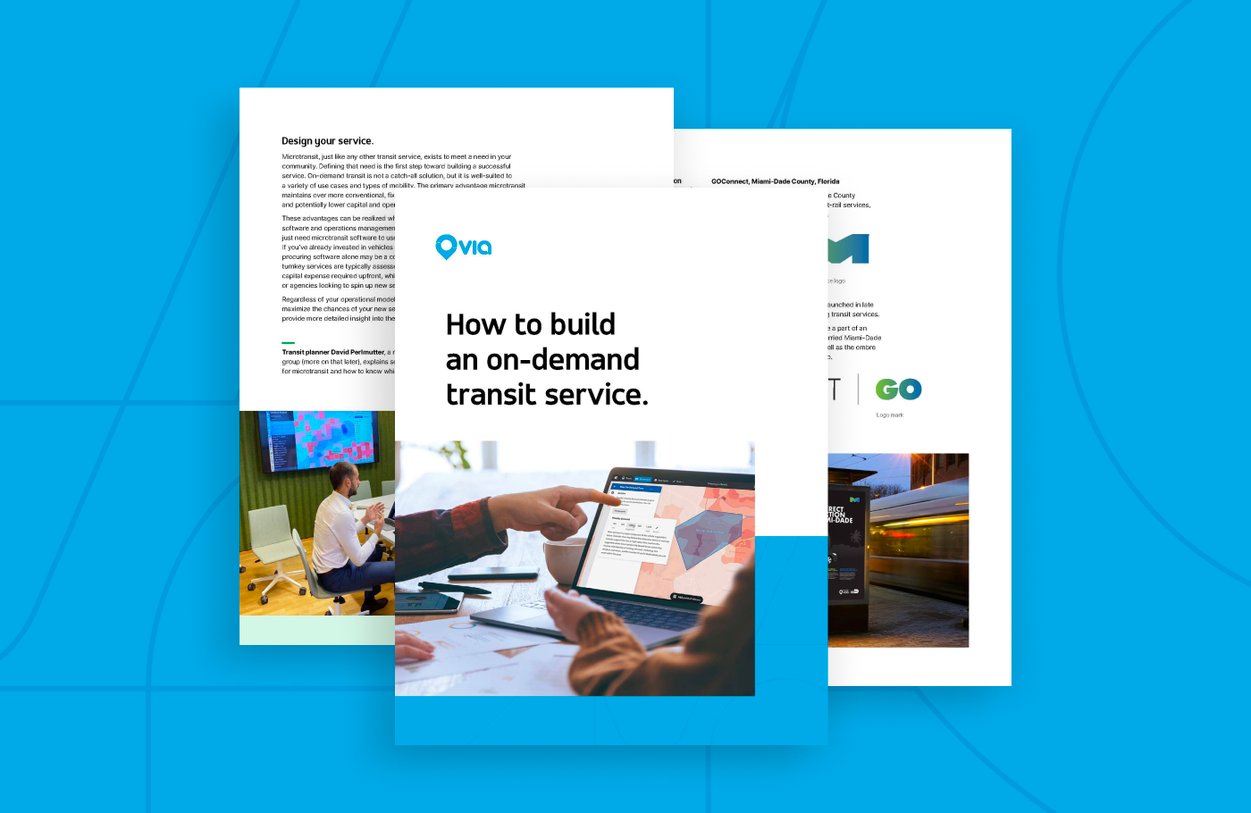Microtransit — or, on-demand public transportation — can work in many scenarios to solve specific mobility challenges in your community. Whether you work at large transit agencies, small municipal governments, or any public sector in between, this microtransit guide is for you, addressing everything you need to know for a successful microtransit launch.
From highly-populated cities in Texas to low-density rural areas on the east coast, microtransit has become a mainstream of hundreds of US transit networks. On-demand transit solutions can be customized to solve unique challenges in different communities: expanding access to public transit, improving first- and last-mile connection and rider experience, or bringing down operation costs.
We’ve put together a guide, complete with advice from Via experts, outlining the steps you’ll need to take to launch a new on-demand transit service. Click below to get the guide, and read on to get a preview of each element of launching a successful microtransit service.
- Design your service.
- Secure your funding.
- Find your vendor partner.
- Develop a brand and market your service.
- Recruit and coordinate with driver partners.
- Managing vehicle operations.
- Support your riders and your team.
- Analyze your service.
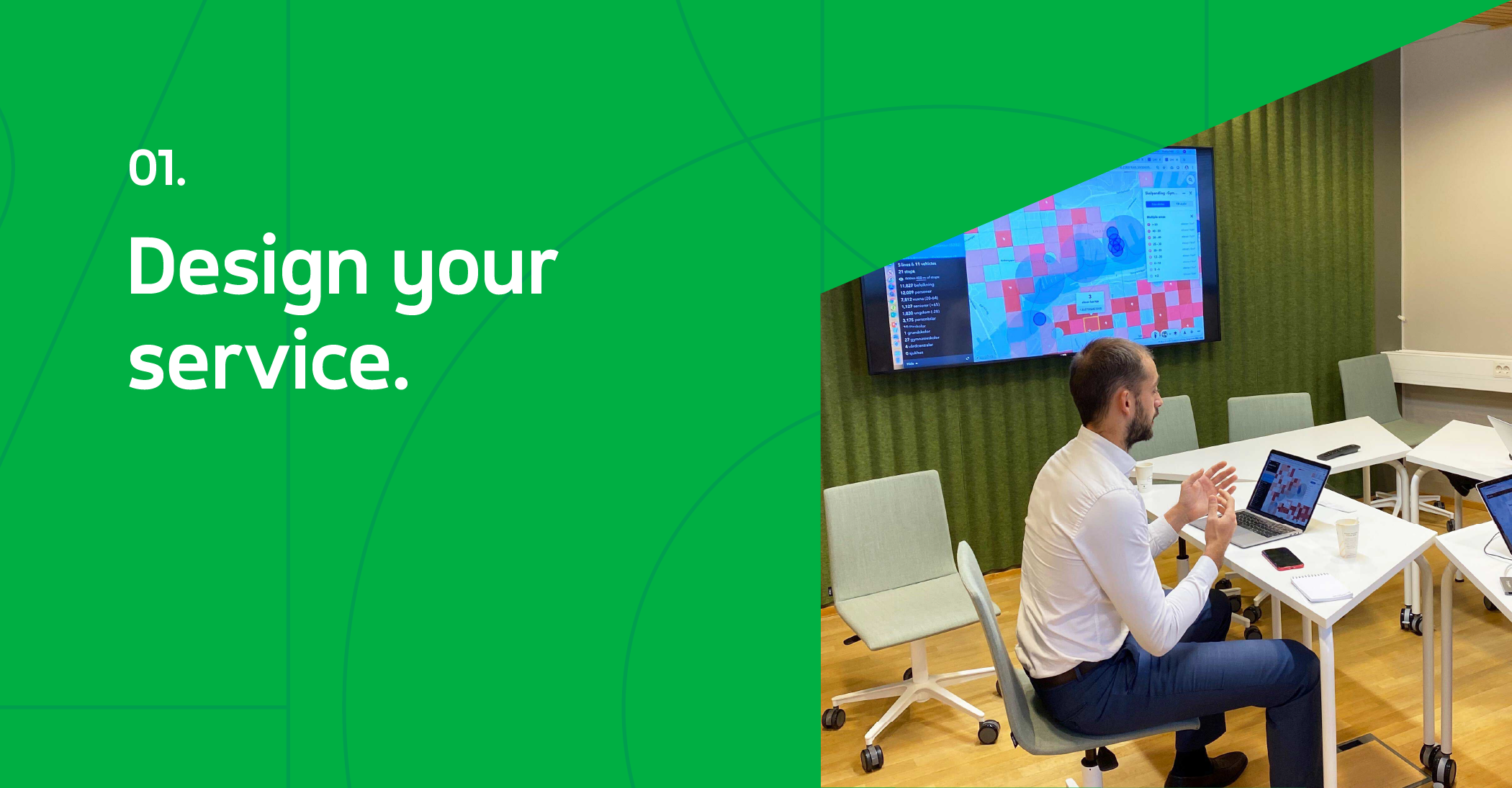
Design your service.
Microtransit, just like any other transit service, exists to meet a need in your community. Defining that need is the first step toward building a successful service. On-demand transit is not a catch-all solution, but it is well-suited to a variety of use cases and types of mobility.
Whether you’re interested in having a vendor take care of every service element, or if you’re just looking for software to power your service, careful planning before launch can maximize the chances of your new service’s immediate success. Common transit challenges we’ve seen microtransit successfully tackle include:
- Increasing mobility in cities or regions with low population density and little to no existing public transit
- Offering first- and last-mile access to existing high-frequency transit infrastructure for residents who live outside a reasonable walk distance
- Replacing underperforming or underutilized fixed routes with microtransit at a lower cost-per-trip
To help our partners work through the planning phases of a new microtransit deployment, Via offers two primary resources:
- Planning services and workshops through our in-house Via Strategies consulting team
- On-demand planning offered through our Remix transit planning software suite.

Secure your funding.
You’ve worked out how microtransit will fit into your existing transit ecosystem. Now it’s time to plan a funding strategy for your new service. In addition to farebox recovery, traditional transit services are funded through a combination of federal, state, and local programs — but what about microtransit?
We’ve worked with our partners to secure funding from a range of traditional and non-traditional sources:
- Federal formula funds, for which microtransit has been eligible since 2016.
- Competitive federal and state grant programs intended for a range of purposes, from technological innovation to environmental sustainability.
- Ballot measures to increase local tax-based funding for transit.
- Partnerships with local hospitals, universities, and employers to subsidize service costs in exchange for extended service hours or free trips for patients, students, or employees.
- Advertising on- or in-vehicle to defray operational costs.
- Partnerships with community and business development groups looking to increase mobility in furtherance of local community or economic goals.

Find your vendor partner.
Once you have a preliminary service design and a plan to fund your new service, you’re ready to solicit vendors. There are two main ways to approach this process:
- Sole-sourcing, or contracting directly with a preferred vendor partner.
- Issuing a competitive request for proposals (RFP) for services.
While RFP — or another formal bid mechanisms, like a request for quotes (RFQs) or sealed bid selection — is often the default procurement model, we have seen successful sole-source procurements in situations like the following:
- Low-cost, pilot-length projects that can be delivered for a lower cost than your jurisdiction’s contract size limit for sole-sourcing.
- Complex services requiring unique vendor capabilities. The more service components you want your vendor to deliver, the more likely it is that only a single vendor can actually deliver the service — and under these circumstances, your organization may be able to sole-source to that vendor.
- Emergency circumstances like a current vendor defaulting on a contract, particularly one for critical services like ADA paratransit.
Of course, your procurement and legal teams will be the best placed to determine whether a potential project is eligible for sole-sourcing in your state or city.
If your team decides to issue an RFP, your approach to drafting your solicitation can have a significant impact on the quality of vendor responses you receive. Our top tips for developing RFPs include:
- Take the time for intelligence gathering, whether by informal conversations with vendors or formal mechanisms like a Request for Information (RFI).
- Describe the problem, not the solution. It can be tempting to prioritize describing the technical details of the service and/or software you want to procure — but an overemphasis on your imagined solution, rather than the problem itself, can ultimately be limiting. Invite vendors to offer their best solution to the problem you are trying to solve.
- Set high standards for your ideal collaboration. Seek a partner rather than a vendor, and include your expectations for this partnership — in terms of support, data analytics, and ongoing service changes/expansions — in your RFP.
- Look for a partner that can back up its claims with concrete, real-world examples of the kinds of results you want to achieve, and value these examples highly in your scoring rubric.
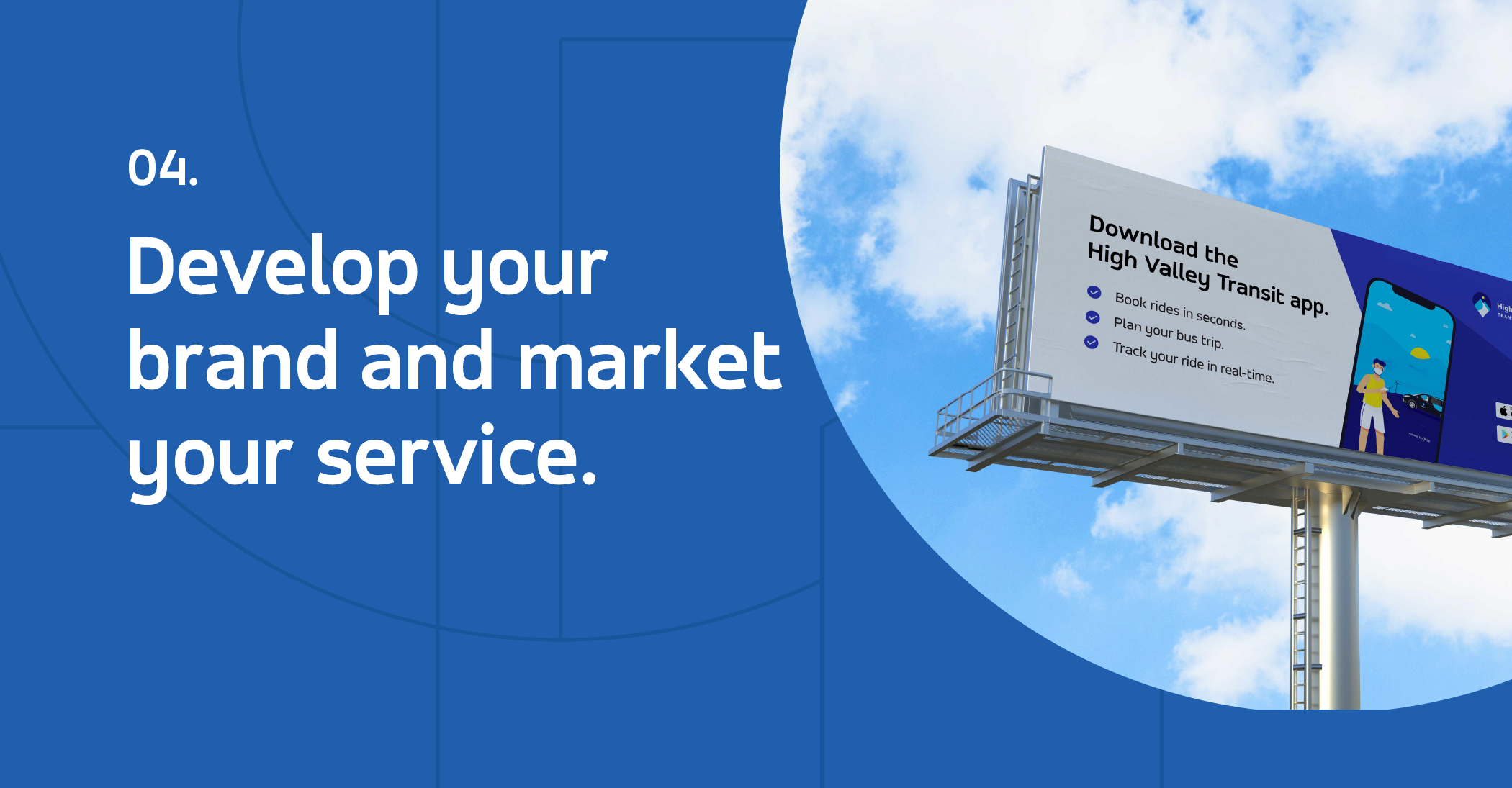
Develop a brand and market your service.
Marketing your new on-demand transit service is key to ensuring a successful launch. Though any new service — a new bus line, a new subway stop — would benefit from marketing efforts, microtransit’s relative novelty makes thoughtful marketing even more essential.
At Via, we approach rider marketing with three primary goals:
- Establish a coherent brand to drive service recognition and guide asset creation. Successful branding can help riders immediately understand what your new service is and how they can use it. Whether microtransit is the latest addition to an established transit network, or your first foray into public transit, our in-house creative team works to develop a brand profile that works for you and your riders.
- Engage with community groups to refine service messaging for specific rider groups. Our community affairs team engages with elected officials, community organizations, senior centers, and other organizations to make sure the service accommodates the needs of riders with disabilities, unbanked or cash-preferred riders, riders without smartphones, non-native English-speaking riders, and more.
- Grow ridership through multiple marketing channels and measure the results. We have a specialized Rider Growth team dedicated to helping riders take that first trip — and bringing them back to ride again and again. We use a combination of physical and digital marketing, along with public relations and social media, to spread the word.
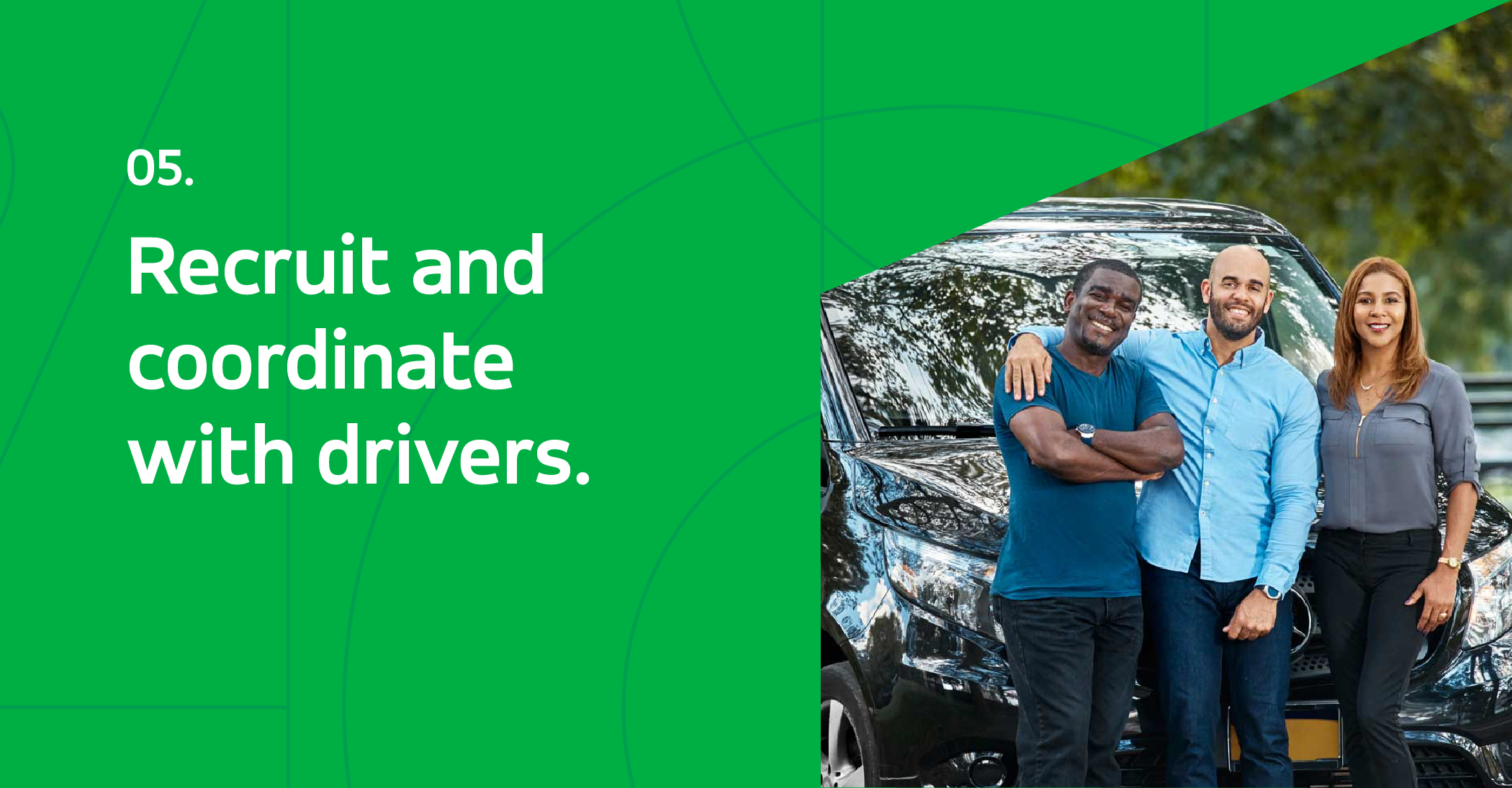
Recruit and coordinate with driver partners.
A successful microtransit service relies on a consistent, committed, and engaged team of drivers. Drivers are the face of any transit service: beyond making it run, they are also brand ambassadors and the first point of contact for customer service.
Staffing a microtransit service often requires a different approach than a traditional transit service:
- Because smaller, 6-8 seat vehicles are typically used, drivers may not need commercial driver’s licenses (CDLs). Your driver pool will be wider, but you may also compete with transportation network companies (TNCs) for those drivers.
- As demand varies throughout the day, microtransit supply can be precision-tailored to match — but this may result in short or otherwise-irregular time slots that may be difficult to fill with traditional recruitment methods.
Our team can either handle driver recruitment and coordination on your behalf, or help you develop a strategy tailored for your region. We break the process down into three main phases:
- Pre-launch recruitment. We work with your team to set targets for the size of the driver pool, the acquisition cost per driver, and the rate of churn and ongoing acquisition post-launch. Then we use various digital and physical marketing channels to reach potential driver candidates.
- Driver onboarding. To get new drivers ready to go, we host a combination of in-person and online onboarding sessions covering our technology, your customer service goals, and details of time-slot selection, driver pay, and driver support.
- Ongoing coordination. To keep drivers engaged, and your service staffed at all times, we work with you to set driver incentives and coordinate town-hall meetings and office-hour sessions.
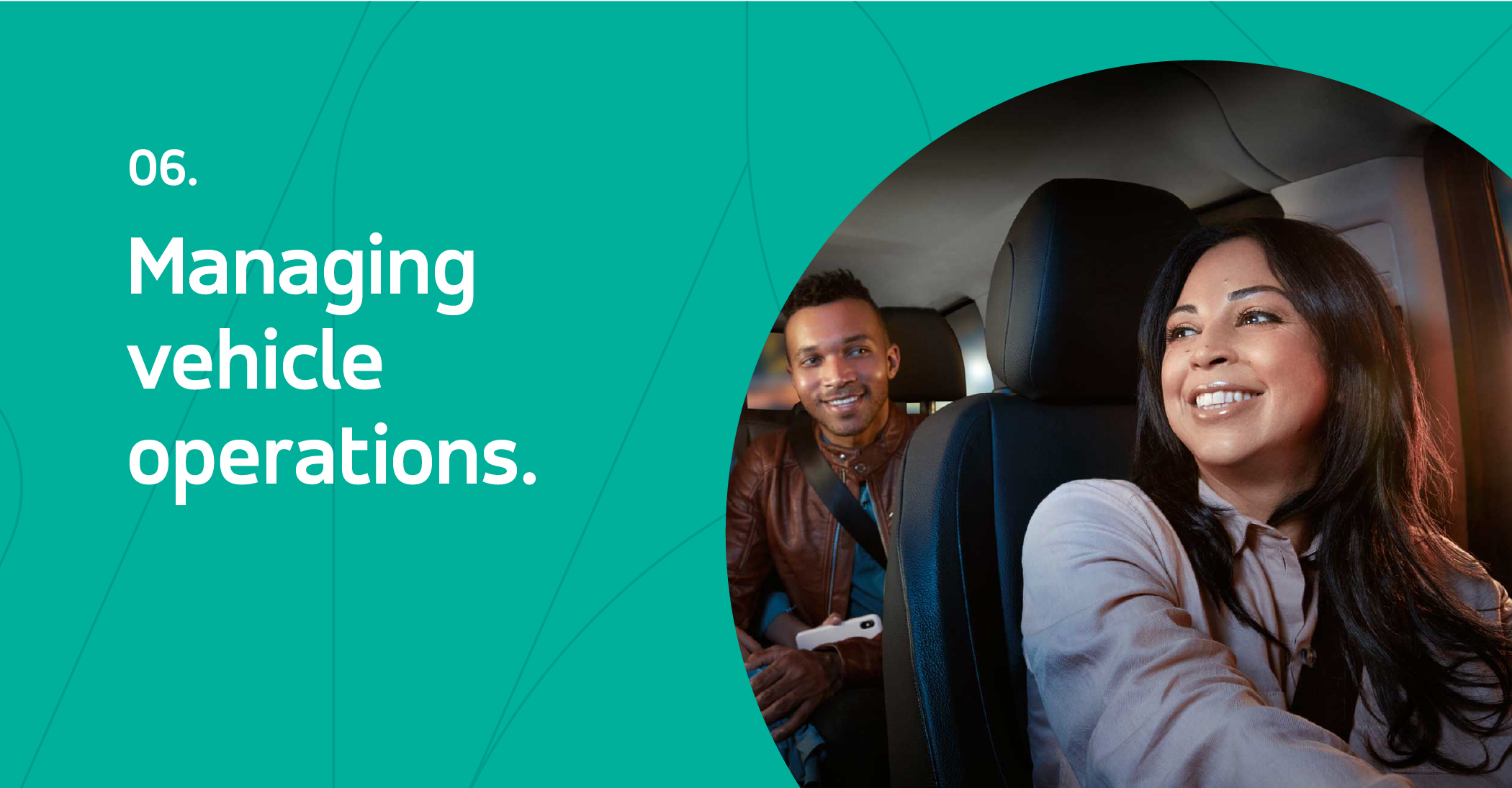
Managing vehicle operations.
The goal of every transit service is to move people from one location to another — and an adequately-sized fleet of well-maintained, service-appropriate vehicles is critical to keeping up smooth operations. We think of successful vehicle operations as consisting of three main stages:
- Sourcing the right vehicles and readying them for service. Determine the appropriate vehicle size for expected vehicle utilization, consider the proportion of wheelchair-accessible vehicles (WAVs) needed to deliver equivalent service for riders with disabilities, and determine the appropriateness of low- or no-emissions vehicles for your service and available infrastructure.
- Keeping the fleet clean and well-maintained. Establish relationships with reliable vendors, and have solutions in place to ensure that vehicle downtime — whether for inspections, cleaning, or unexpected breakdowns — does not significantly impact the supply available for service.
- Evaluating vehicle needs and adjusting as service evolves. Microtransit fleets are typically leased, which allows for considerable flexibility as service needs change over time. We work with our partners to monitor their service needs over time, and adjust their fleets as needed. For example, a transit agency might develop new sustainability targets and require a higher proportion of EVs; or a city may find that a higher proportion of WAVs is required to serve passengers with disabilities.
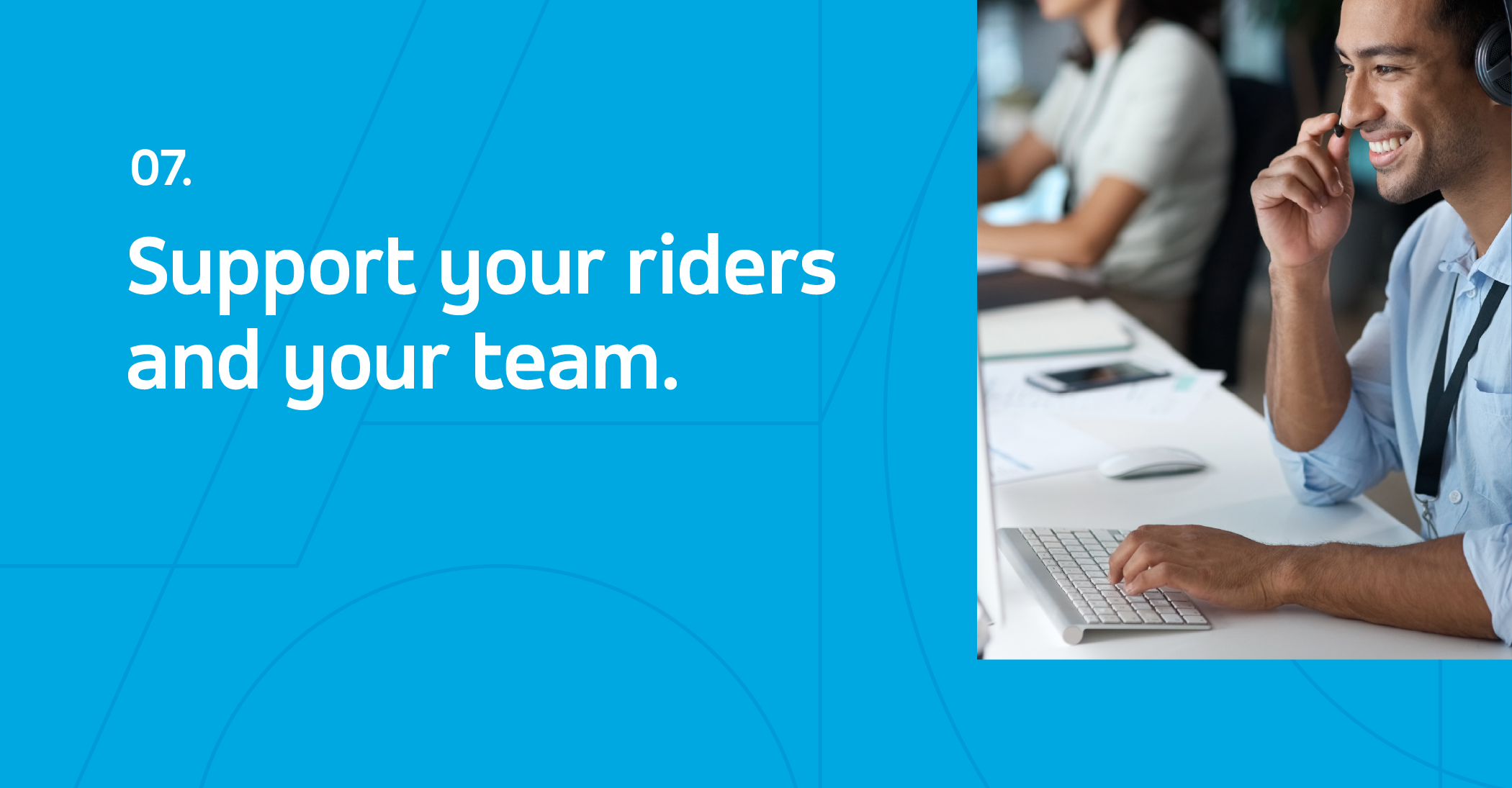
Support your riders and your team.
Riders know all about your service, and your drivers and vehicles are ready to take them where they need to go — but what happens when riders have questions? Or if your own team members need technical assistance, or help resolving a service issue?
If you work for a transit agency, you may already have a customer support team that handles rider questions, comments, and complaints for your existing services. Or you may choose to leverage Via’s in-house support team, who specialize in monitoring live microtransit service and helping customers resolve common questions like “where’s my vehicle?” Our Rider Support team develops and runs robust training programs, agent development programs, and agent resource databases to ensure that we can offer top-notch support in-app, by phone, and by email.
Though we’ve worked hard to develop an intuitive product for service management, we know that sometimes, our partners just need a bit of help! Whether you’re struggling to remember how to add and modify driver shifts, or want to more closely investigate an incident that happened on the road, our Partner Support team has developed a dedicated partner support portal to connect your team to experts ready to help.
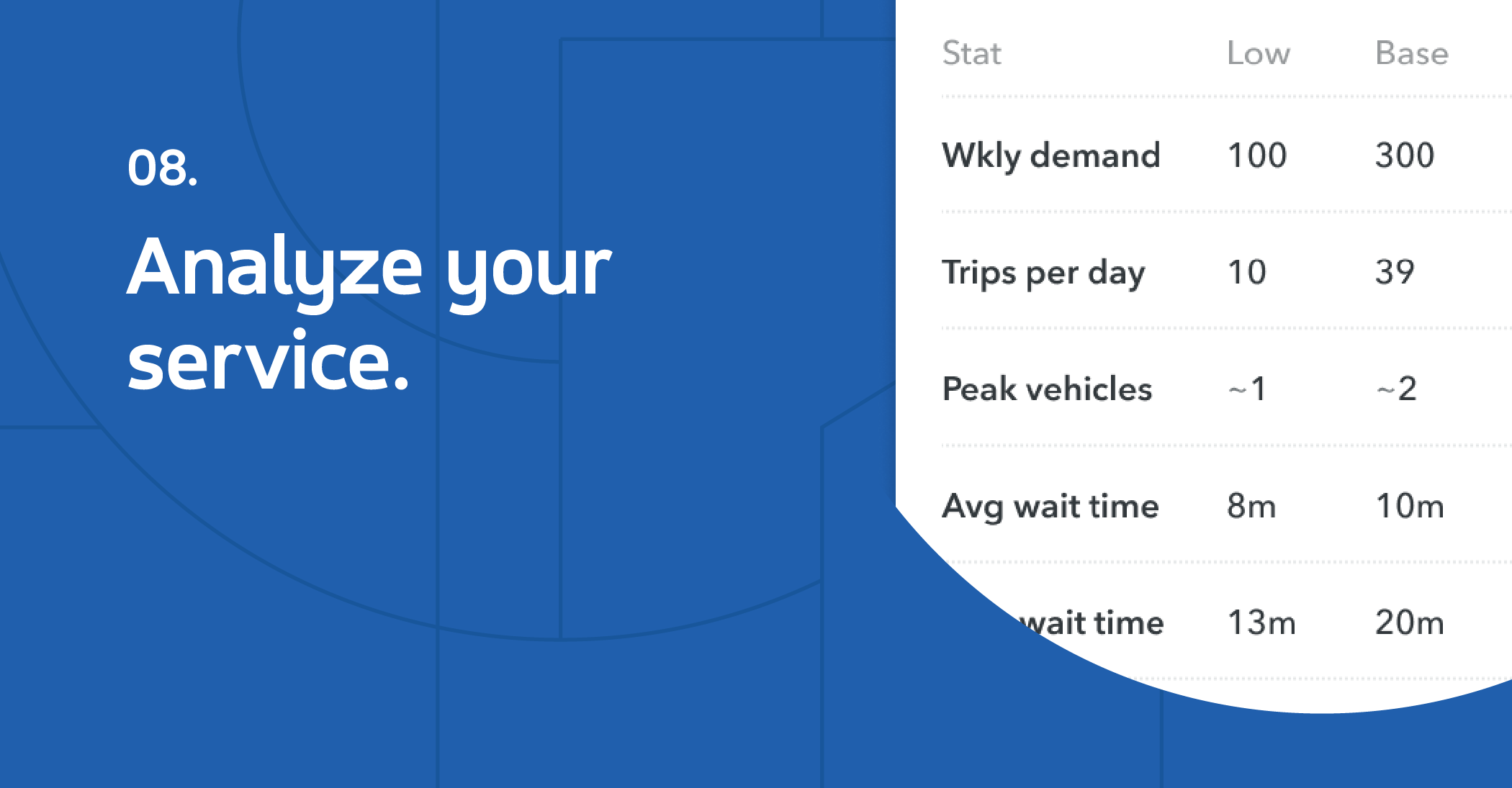
Analyze your service.
Whether you’re an old hand at submitting NTD reports, or new to the world of transit analytics, microtransit data can unlock new kinds of insights for your agency or your city. Because microtransit trips are requested and booked with software — a rider app, or with a phone reservationist through a dispatcher interface — service data can reveal highly granular information about transit demand patterns in your community.
We work with our partners to help them make the most of their data, by:
- Analyzing KPIs and iterating service accordingly. We can make tweaks to the routing and assignment algorithms — increasing pickup walk distance or permitted detours, for example — to optimize for the service metrics that matter most to you, like average wait time and utilization.
- Planning for future transit projects. We encourage our partners to think about their service data not only as a guide to improving operations right now, but as a blueprint for future service development: additional or expanded zones, new or adjusted fixed-route service, new transit hubs, and more.
- Satisfying reporting obligations. We make this as easy as possible by offering easy-to-use data dashboards, downloadable datasets, and specialized reports tailored to common requirements like NTD reporting.
Want to learn more about launching on-demand transit. Reach out to partnerships@ridewithvia.com, or click below to get our full guide to building a microtransit service.
